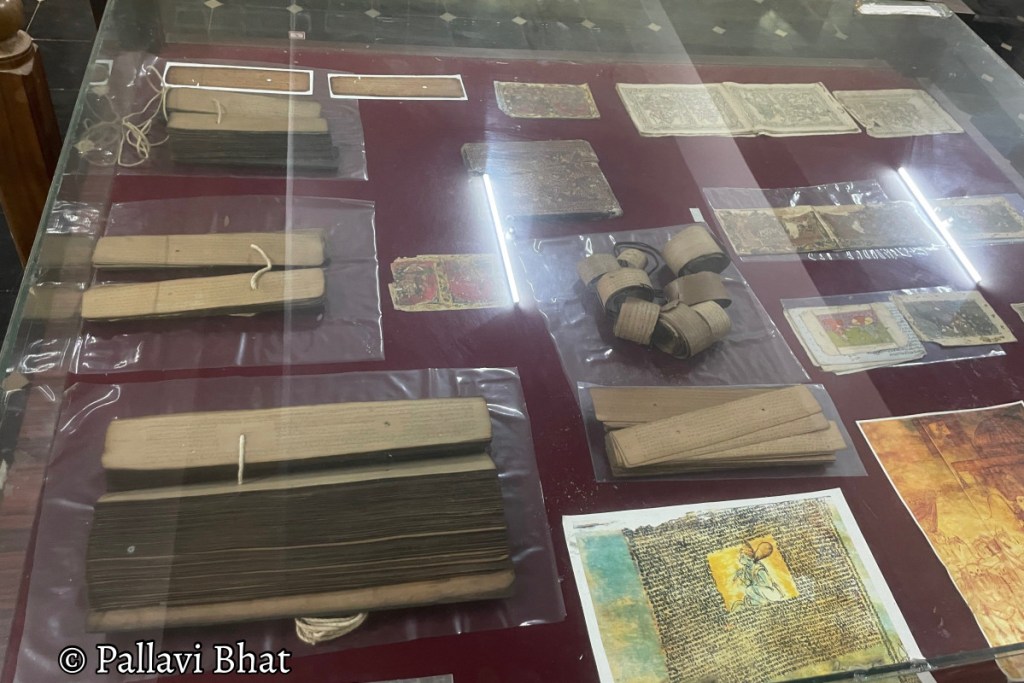Keladi Museum – Nestled in the serene surroundings of Keladi, adjacent to the revered Rameshwara Temple, the Keladi Museum stands as a luminous beacon of history and culture.

Table of Contents

This hallowed repository holds within its walls an extraordinary array of artifacts, manuscripts, sculptures, and more, providing a captivating glimpse into the Keladi period and the dynasties that shaped it. From copper inscriptions to stone sculptures, from manuscripts to a treasury of coins, the museum is a veritable time capsule that transports visitors to an era of splendor, wisdom, and artistry.

Keladi’s Historical Significance:
Keladi’s historical importance dates back to the late 15th century when Chaudappa Gauda established the Keladi Nayaka kingdom in 1499. This marked the beginning of a significant era that left an indelible mark on Karnataka’s history. The village served as the epicenter of the Keladi Nayaka dynasty, making it a site of immense historical relevance.
Genealogy of Keladi chiefs:

A Journey Through Time – Keladi Museum:
The Keladi Museum is not merely a collection of artifacts; it is an immersive journey through the annals of history. Copper inscriptions, the ancient form of documenting events, governance, and societal norms, offer a direct link to the past. These inscriptions, hailing from the illustrious Vijayanagara and Keladi eras, provide a unique perspective on the administrative and cultural dynamics of the time.

Wisdom Encased in Palm Leaves:
The museum’s collection of palm leaf and paper manuscripts is a treasure trove of knowledge. With around a thousand manuscripts penned in Kannada, Sanskrit, and Telugu, as well as four hundred manuscripts in the Tigalari script, the museum covers an astonishingly wide spectrum of subjects. Literature, art, Dharmashastra (ethical and moral codes), history, astrology, astronomy, medicine, mathematics, and even veterinary science find a place within these delicate leaves. These manuscripts offer a glimpse into the intellectual pursuits of the era and reveal the depth of knowledge that thrived during the Keladi period.

A Glimpse into Daily Life in Keladi Museum:
The museum goes beyond grandeur and delves into the everyday life of the people of Keladi. Betel nut crackers, locks and keys, weights, combs, domestic vessels adorned with intricate artistry, and even arms tell stories of daily routines, craftsmanship, and societal norms. These objects humanize history, making it relatable and tangible to visitors.

Coins: Chronicles of Economic Evolution:
The museum’s collection of coins is a testament to the region’s economic evolution and political dynamics. Spanning the Portuguese, Mysore Wodeyars, Haider Ali, and Tipu Sultan regimes, these coins offer insights into the changing power dynamics and trade networks that shaped the region’s destiny.
Keladi Museum – Sculptures, Carvings that Transcend Time:
The stone sculptures housed within the museum are visual poetry etched in stone. Hero Stones, Sati Stones, Nisidi Stones, sculptures of Jaina tirthankaras, Kalamukhas, Kalabhairava, Chennakesava, and more, vividly narrate tales of valor, devotion, and diverse spiritual beliefs that thrived during the Keladi period.



Keladi Museum Timings :
Keladi Museum and Historical Research Bureau is 7 days open between 10:00 AM to 06:00 PM.
How to Reach Keladi:
The Keladi Museum is located in Keladi, Karnataka, India. To reach the Keladi Museum, you can follow these general directions
- By Air:
- The nearest airport is Shivamogga Airport, located approximately 93 kilometers away from Keladi. From the airport, you can hire a taxi to reach Keladi.
- By Train:
- The nearest railway station to Keladi is the Shivamogga Railway station which is well-connected to major cities in Karnataka and neighboring states. Once you reach Shimoga, you can hire a taxi or take a local bus to Keladi.
- By Road
- Keladi is accessible by road and is well-connected by a network of state highways. You can reach Keladi by bus or by driving if you have your own vehicle.

We visited Ikkeri temple before visiting Keladi museum. Here is a detailed post on Aghoreshwara Temple Ikkeri.
Suggested Watch :
A Legacy for Generations:
The Keladi Museum is a custodian of the past, safeguarding its treasures for the generations yet to come. Its commitment to preserving history, fostering education, and promoting cultural exchange ensures that the legacy of the Keladi period continues to thrive and inspire.
In conclusion, the Keladi Museum isn’t merely a collection of objects; it’s a journey through time, a bridge connecting the present to a remarkable past. Its artifacts, manuscripts, sculptures, and coins collectively weave a tapestry that tells the story of an era defined by its art, wisdom, and culture. A visit to this museum is an immersive experience, a chance to traverse the corridors of history and emerge enriched with a deeper understanding of the Keladi period’s profound impact on the cultural landscape of Karnataka.
Leave a Reply